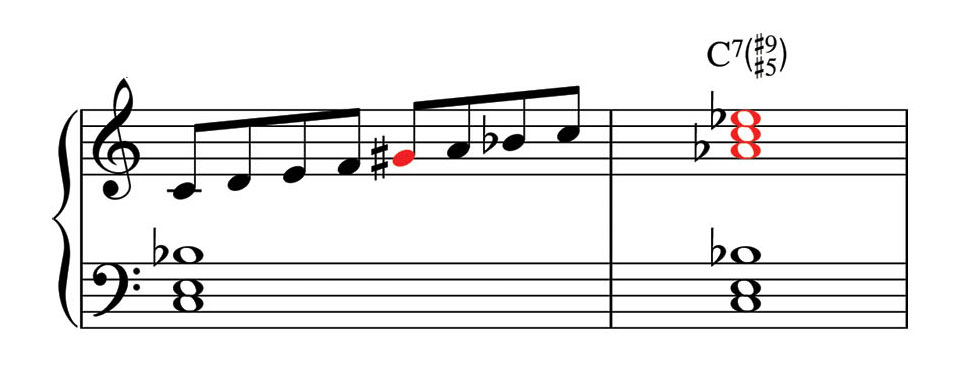Talk about a silver lining… Living near Seattle (one of the major US hotspots) almost everything I had scheduled has cancelled. I’m using this opportunity to practice, practice, practice (although I don’t expect to make it to Carnegie Hall.)
Just got word that our end-of-session Jazz Night School (Seattle) performances have been cancelled. I’m sad but also glad that some starting to take Covid-19 seriously. On the bright side per cancellations I’m glad for more time with PG and lots more time to practice.
I’m finally getting serious with minor 251’s.
Hi @Hayden and everyone, I hope that you and your families are all doing ok. I recently started practicing Hanon piano exercises again, does anyone remember doing those as a child ? When I was very young, they seemed incredibly boring, but now, with self-isolation, they are almost like a meditation, and the discipline of them is strangely soothing in a way. @wendy I’m doing 251’s every day too.
Cheers 
I’m finally remodeling the bathroom - seems like a good time for it - but @natasha0412 , I’ve also just broke out my copy of Hanon as well since you brought it up.
Can’t decide which is worse…
J
Even though I am fully retired, living in NY City has significantly reduced my freedom of movement outside our apt. I am more motivated to turn to piano (I am tackling Naima at present, wow!!) which I find also helpful, not only in practicing, but also as a positive, uplifting element in my life. Humor (my wife and I life at my attempts to play Naima) and beauty (of any jazz tune I turn to) is a fine combination to spice up my life. Agree with Wendy re "silver lining’ of the current horrific situation we all find ourselves in.
Hi @wendy, I have been working on Major and Minor 251 for a very long time, as getting the hand shapes correct is important to me, as well as mastering inversions. It finally dawned on me that the V7 in the middle of both Major and Minor 251 can have the same #9, #5,b9,3,b7, alterations, so there’s a third of the work done right there 

All the best with your practice
Hi John, it’s amazing, isn’t it, how detailed the Hanon actually is. I’m taking it very slowly, so if the figures are in semi-quavers , then my crotchet tempo doesn’t even exist on the metronome 
Cheers
I hate to be thick about this, but could you elaborate; perhaps with examples? I appreciate all the help I can get. Thanks.
Hi Wendy, as I understand it, the Dominant V7 can have alterations / tensions added to make harmony more interesting, so we can add a #9, or b9, or #5 / b13 which then get resolved to the 1 chord. In a major 251 progression., we could have ( in the key of F ) a Gm7, C7, F major 7. Then, to add alterations, we could have Gm9,C7#9,#5, Gmajor7.
What I noticed was that in a minor 251, there is also Dominant V7, so it could use the same alterations, so that is what I meant by " a third of the work done" in my previous comment. In the Syllabus pages of this site there is a 251 Progression course, where @Hayden explains all this very clearly, and I found it incredibly useful.
All the best.
That’s exactly right @natasha0412 - We can apply the same alterations and upper structures over both major and minor 251 progressions. So anything we learn over a minor 251 can usually be applied to major 251s and vice-versa.
There are some Upper Structures that are more suited to minor 251s. Here’s an interesting relationship to explore:
US#11 (major triad off the #11) gives us #11, b7, & b9, in our right hand triad:
US#5 (major triad off the #5) gives us #5, root, & #9 in our right hand triad:
If we combine the notes of these two upper structures, we get all of the possible alterations (b9/#9/#11/#5) and also all of the notes of the altered mode except the major 3, which we can play in our left hand:
Minor 251s are often characterised by lots of alterations and tense sounds and so it can be nice to use these 2 upper structure over minor harmony to create that tense and distinctly minor flavour.
Now that’s not to say you can’t use these upper structures over major 251s, quite the contrary, they sound great, but when we combine these 2 upper structures they outline all of the altered notes which makes them particularly well suited to minor 251s.
My personal taste for major 251s is to use US2 which gives us a 13#11 sound, and US6 which gives us a 13b9 sound. But of course that depend on the melody note.
We explore these relationships in detail in the following lessons:
Also the UST Cheat Sheet is handy to have by the piano until we have memorised and internalised these formulas:
Upper-Structure-Cheat-Sheet.pdf (949.5 KB)
Have fun exploring this stuff, it’s very fun to play around with!
Cheers,
Hayden
Thank you Hayden and Natasha. So much to learn. So much to work on. So much fun. Back to the piano now…


